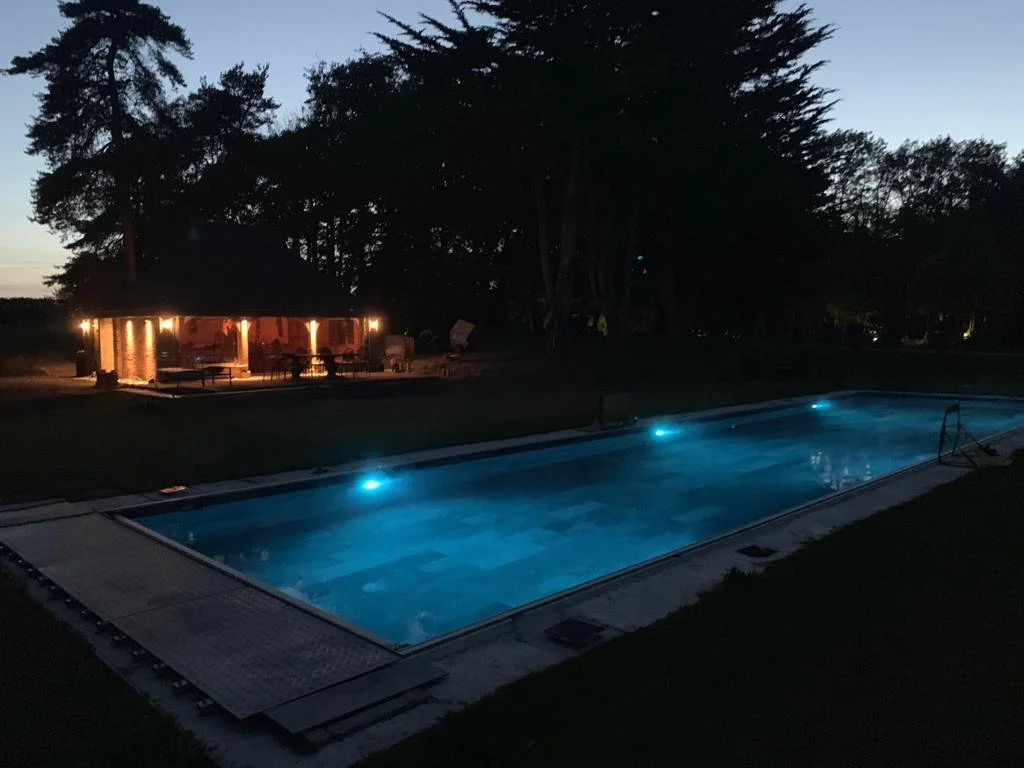Stop Lighting the Floor: How Thoughtful Luminaire Placement Transforms a Space
There’s an old habit in the building industry that refuses to die: the grid of perfectly symmetrical downlights, spaced like graph paper, marching across a ceiling with military precision.
It looks ordered. It looks safe.
And it completely fails the architecture.
Because great lighting design isn’t about putting dots on a ceiling.
It’s about lighting the space — the surfaces, textures, features, and functions that actually matter.
Lighting the Room vs. Lighting the Space
Most rooms don’t need uniform brightness.
They need emphasis, hierarchy, and rhythm. They need to guide the eye to what’s important and soften what isn’t.
Lighting the room is simple.
Lighting the space is where the magic happens.
That means:
Light the walls, not the floor.
Highlight materials, not voids.
Wash surfaces, graze textures, and build contrast where it benefits the room.
And accept — lovingly — that the ceiling might end up asymmetrical, because good lighting rarely sits in a neat grid.
This is where the architectural mindset kicks in: thinking in volumes, planes, and sightlines, not spreadsheets of lux targets.
Why the “Ceiling Grid” Approach Falls Short
A ceiling grid appeals to two types of people:
Those who love symmetry.
Those who’ve never spent time studying what light actually does.
Gridded downlights tend to:
Over-light the centre of the room.
Under-light the walls (which is where the real visual interest usually is).
Draw attention to the ceiling instead of the architecture.
Make everything look flat, uniform, and slightly lifeless — like the lobby of a 1990s leisure centre.
Worse still, these grids ignore how humans perceive light.
We don’t care about even illumination.
We care about contrast, direction, and the way light interacts with surfaces.
The Architecture is the Canvas — So Light It
Every good lighting design starts by asking a simple question:
What’s worth lighting?
Because if the answer is “the floor”, something’s gone wrong.
Instead, look at:
Feature walls
Fireplaces
Joinery
Artwork
Tactile materials
Architectural recesses
Window reveals
Staircases
Textured surfaces
Niches, alcoves, and transitions
These give a room its identity — and they’re what deserve the light.
Downlights become tools, not decoration. You position them to hit something specific: a plane, an object, a surface, a moment.
And once you start lighting features, the ceiling grid simply doesn’t survive.
Nor should it.
Why “Ceiling Symmetry” Isn’t the Goal
Lighting doesn’t need to be symmetrical to be balanced.
Often, trying to force symmetry does more harm than good.
You end up compromising the light in service of the ceiling — when it should be the other way around.
Architectural lighting is about:
Visual balance, not mathematical symmetry
Atmosphere, not luminaire alignment
Highlighting emotional focal points, not plasterboard patterns
A ceiling with luminaires placed for the room, not for the ceiling, always feels more natural, more comfortable, and more intentional.
Techniques That Make Spaces Feel Beautiful
There are a few lighting moves that always elevate architecture:
1. Wall Washing
Soft, even light on a wall expands a space, improves visual comfort, and gives depth. Especially powerful on pale surfaces.
2. Grazing
Positioning light tight to a textured wall reveals every ripple, grain, and contour. Fantastic for stone, timber, and brick.
3. Accent Lighting
A narrow-beam downlight aimed at artwork or sculpture creates instant hierarchy and adds sophistication without shouting.
4. Perimeter Lighting
Lighting the edges of a room makes it feel larger and more inviting. Often achieved with concealed linear sources.
5. Layering
Combining task, accent, and ambient light is where a space comes alive. No single layer can do it all.
This is lighting with purpose — and it’s the opposite of the “grid and hope” approach.
The Human Factor: Why This Matters
Well-directed light supports how we actually live.
It shapes mood, draws focus, calms or energises, and highlights the things we value.
When lighting is thoughtfully placed:
Kitchens feel warmer and more intentional
Living rooms feel calmer
Bedrooms feel softer
Bathrooms feel like spas, not interrogation rooms
Architectural features gain importance
The ceiling disappears — as it should
Great lighting is something you feel long before you consciously notice it.
Our Approach at Light Fantastic
We don’t start with the ceiling.
We start with the architecture — the bones of the space — and we design from there.
Our process:
Study the room: materials, flow, focal points, function.
Decide what deserves light.
Use the right tools: precise downlights, linear sources, hidden details.
Position luminaires with intent, not symmetry.
Test, adjust, and refine on site until the space feels right.
We design lighting that enhances the architecture, not distracts from it.
In Short
If the first question you ask is, “Where do the downlights go?”, you’re already on the wrong path.
If the first question is, “What deserves the light?”, you’re building something special.
Thoughtful luminaire placement turns architecture into an experience.
Grids turn ceilings into Swiss cheese!
If you want lighting that feels effortless — because it was designed with purpose — we’re here to help.
📞 01892 313181
Let’s light the space, not the ceiling.

